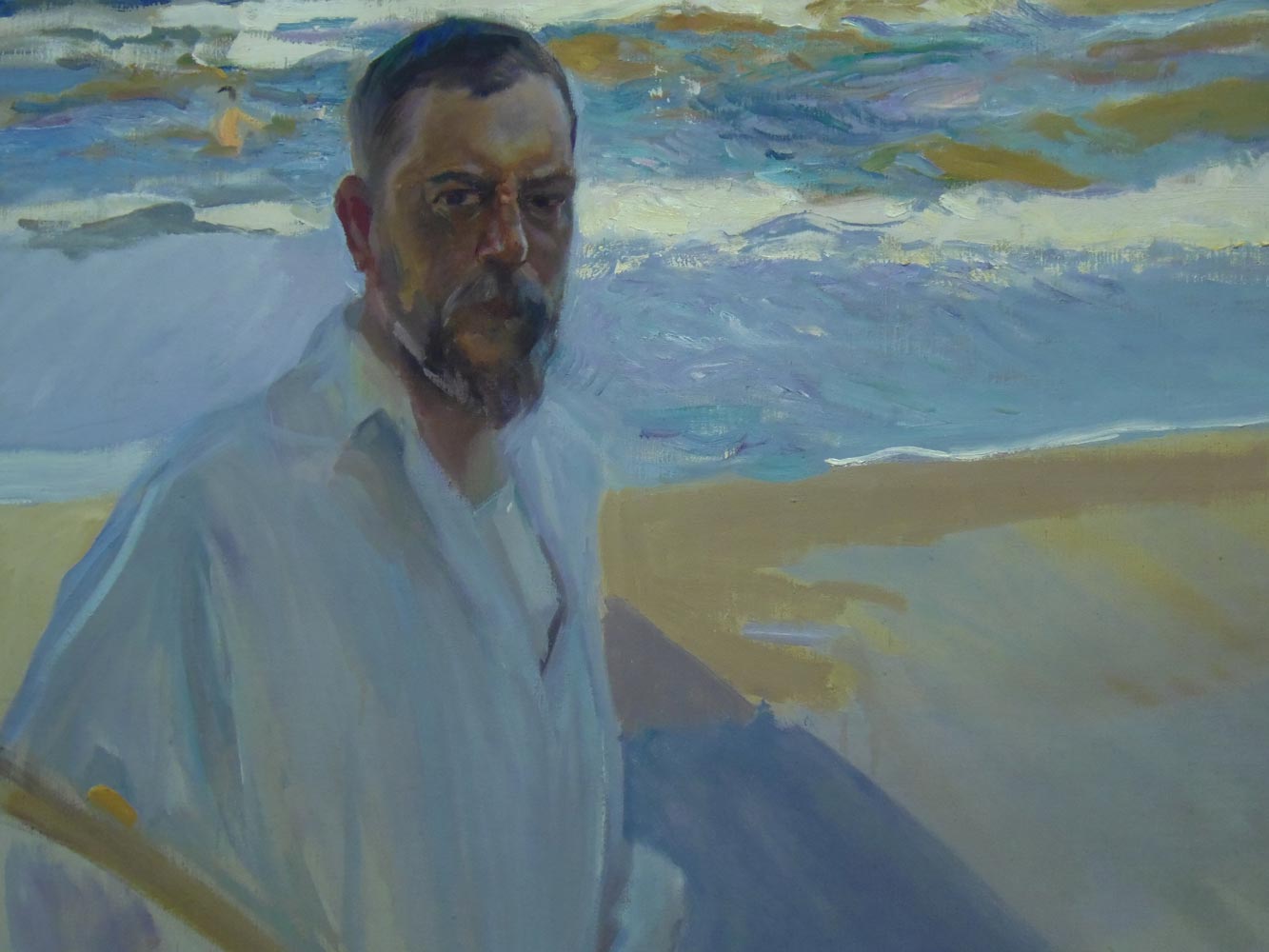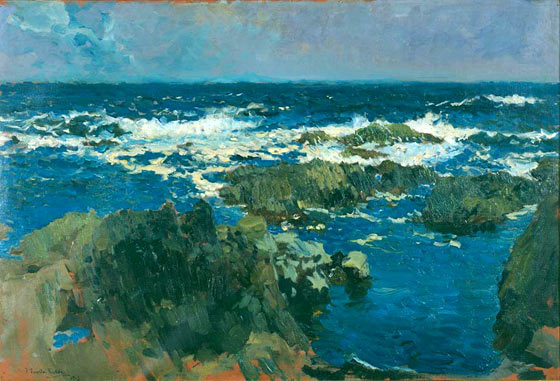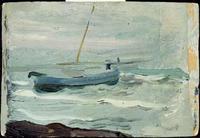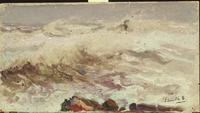An exhibition, "Sorolla: The Colour of the Sea" has just come to Palma de Mallorca via the CaixaForum, having travelled to various cities in Spain in larger or smaller version. The paintings and oil on board studies have been lent by the Sorolla Museum in Madrid. They reflect Joaquín Sorolla's passion for the sea, despite the fact he was not born at the coast. They also testify to his enormous skill in working en plein air, at great speed, trying to be faithful to the every-changing light, the restless sea in all its moods and the feel of the place in which he was painting.
Sorolla commented, "Me sería imposible pintar despacio al aire libre. No hay nada inmóvil en lo que nos rodea. El mar se riza a cada instante, la nube se deforma, al mudar de sitio – pero aunque todo estuviera petrificado y fijo, bastaría que se moviera el sol, lo que hace de continuo para dar diverso aspecto a las cosas. Hay que pintar de prisa porque cuanto se pierde, fugaz que no vuelve a encontrarse!”. Roughly translated, Sorolla said that it was impossible for him to paint slowly en plein air. Nothing stays still around us. The sea ripples continuously, clouds change their form as they move, and even if everything were totally still, even cast in stone, everything would still change in aspect because the sun moves all the time. You have to paint quickly because so much gets lost, some much is fleeting and will never return.
Any artist who has worked outdoors knows exactly what Sorolla was talking about.
The exhibition showed a fair number of oil on cardboard, small studies, "Colour Notes", and for me, they were the most fascinating aspects of seeing the show. In this first blog entry on Sorolla, I will concentrate on them, as far as I am able to find decent images. First of all, you see Sorolla responding to Nature's colours and forms and seeking the fleeting approximation of the colours and light that he saw. These small rectangles of colour impressions are so abstract it is amazing, even though Sorolla was a passionate Realist.
Since the sea is endlessly in motion, it is astonishing how Sorolla captures its moods and movement, particularly considering that he did not spend all his time at the coast. His early visits to the brilliantly-lit Mediterranean areas near Javea and Valencia were later contrasted with visits to the north at San Sebastian and Biarritz, with very different atmospheric and marine conditions.
The studies and paintings of the sea are, to me, the most wonderful part of Sorolla's opus. For him, of course, these studies were the preparation for the larger finished paintings. He knew that understanding a scene, preparation and prior choice of colours all helped when it came to working on a bigger canvas. He remarked, "The great difficulty with large canvases is that they should by right be painted as fast as a sketch. By speed only can you gain an appearance of fleeting effect. But to paint a three yard canvas with the same dispatch as one of ten inches is well-nigh impossible.”
Nonetheless, Sorolla also knew that once he got going, all bets were off on how the painting would evolve, because the light, scene, sea, would be continually changing. He advised, “Go to nature with no parti pris. You should not know what your picture is to look like until it is done. Just see the picture that is coming."
For him, as for every artist, especially one working en plein air, every work was a gamble. In his case, however, his gambles paid off handsomely most of the time.
















